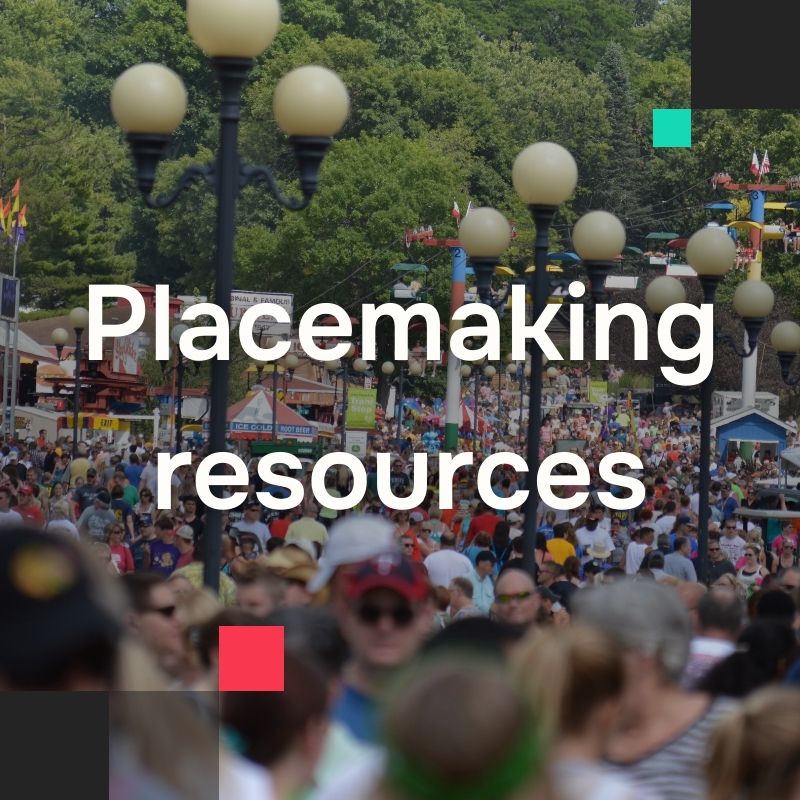ESG (Environmental, Social, Governance) standards are increasingly shaping investor expectations and consumer preferences, the worlds of placemaking and retail sustainability reporting are intersecting in powerful and transformative ways. Bold retailers are discovering that well‑designed, vibrant spaces are more than just shopping destinations; they can serve as measurable, reportable assets in building credibility and proving impact.
Placemaking ESG supports retail sustainability reporting


Environmental transparency through the built environment
Placemaking projects offer a tangible way to address retail environmental metrics. Whether it’s integrating solar roofs, rainwater capture, composting bins, or green walls, each sustainable feature becomes data to report.
Example in action
Haresh Mirpuri, founder of Essensai067; a 5.16‑acre retail development in Bangalore, prides himself on blending placemaking and renewables:
“Sustainability should be a foundational element, integrated from the project’s inception”
His site uses solar panels, rainwater harvesting, and organic waste conversion, providing real-time data on energy savings and reduced water usage. Those figures feed directly into retail sustainability reporting.
Why it matters
A UN‑aligned white paper by POPAI defines sustainability as enabling current needs without hindering future generations. Retail developers now answer: “Is this space regenerative? Does it cut embodied carbon?” Through placemaking, the answers become measurable.
Social reporting: community, welfare, and purpose
Retail placemaking isn’t just about walls and floors—it’s about building community. Hosting workshops, weekend markets, local artist exhibitions, or yoga in green spaces yields data on social engagement and stakeholder relations.
Fred Kent, founding president of Project for Public Spaces, summed it up best:
“Placemaking is community organizing. It’s a campaign.”
These community-driven efforts create rich qualitative narratives and social KPIs like attendance, engagement hours, and tenant satisfaction scores, vital for ESG “S” disclosure.

Adaptive reuse: Carbon saved over time
Repurposing existing structures is at the heart of sustainable placemaking. Instead of demolishing an old mall or warehouse, developers retrofit it, preserving architectural character while avoiding emissions tied to new construction.
A 2023 MDPI study on placemaking in sustainable urbanism describes adaptive reuse as yielding “long‑term cost savings and environmental benefits”. These savings, whether from reduced material waste or avoided embodied carbon, are tangible environmental KPIs companies can report.
Performance metrics via operational efficiency
Smart placemaking isn’t just beautification; it’s functional design that drives efficiency. From footfall patterns and heat-maps to energy-usage dashboards and Wi-Fi-enabled benches, data collection becomes seamless.
According to a First Insight report, 62% of Gen Z buyers prefer sustainable brands, and 73% will pay more for them.
Retailers can use placemaking data, like increased dwell time, traffic flows, and energy use per visitor, to show ESG-conscious investors that their place-based investments drive both sustainability and revenue.

Looking for more placemaking resources?
Visit our placemaking knowledge base.
Strategic ESG storytelling and transparency
Retail sustainability reporting is increasingly narrative, space becomes the ESG story. Placemaking delivers that narrative: why this corner is green, what local partnerships were formed, how adaptive reuse honors heritage or saves carbon.
Guidance from reporting experts
Lois Guthrie from IIRC emphasizes modern reporting:
“Reporting has to change—it needs to be integrated thinking, taking into account all kinds of capitals”
Property developers can present each place as a micro‑ecosystem reflecting environmental, social, and governance alignment—all tied to global frameworks like the UN SDGs.
“When sustainability is viewed as being a matter of survival for your business, I believe you can create massive change.”

Placemaking governance & stakeholder accountability
Placemaking engages tenants, city councils, community groups—each stakeholder loop is governance data waiting to be logged. As Mindy Lubber of Ceres noted during GRI’s 25th anniversary:
“Launching the global standard for corporate sustainability reporting … helped kick off a global movement to bring climate disclosure to the marketplace.”
By mapping each placemaking decision to a stakeholder (e.g., tenant advisory boards, local government forums), you showcase a robust, multi-stakeholder governance model rooted in recognized reporting standards.
Creative placemaking ROI
Economically, placemaking strengthens foot traffic, tenant retention, and community buy-in. These become reportable ESG metrics. The US NEA white paper highlights the effects of culture‑led placemaking on livability and revitalization metrics that investors care about.
Digitally-enabled spaces make ongoing metric collection; from energy use to tenant satisfaction, possible.
A unified placemaking framework + ESG reporting
| Placemaking Element | ESG Metric Opportunity | How to Report It |
|---|---|---|
| Green roof, solar infrastructure | Energy saved (kWh), CO₂ avoided (tons) | Integrated environmental data; included under GRI 302/305 |
| Community events, social hubs | Attendance, volunteer hours, tenant satisfaction rates | Report under social KPIs; include narrative of stakeholder impact |
| Adaptive reuse of building | Carbon emissions avoided (embodied); cost savings | Lifecycle assessments, Scope 3 disclosures |
| Digital placemaking tools | Energy per visitor, footfall trends, dwell time | Real-time dashboards feeding ESG A metrics; benchmark against year |
| Multi-stakeholder governance | Meeting minutes, action logs, participation rates | Document under governance and stakeholder engagement |
An ESG placemaking strategy achieves sustainability targets
Placemaking elevates spaces from empty boxes into engaging, regenerative, and measurable assets. From sunlight streaming through a green wall to the laughter at a weekend farmers’ stand, every moment becomes reportable impact.
By aligning placemaking with ESG frameworks, retailers can:
-
Report greenhouse gas reductions (GRI 302/305).
-
Showcase social cohesion through event metrics and equity indicators.
-
Prove governance via stakeholder logs.
-
Include adaptive reuse lifecycle savings.
With strategic metrics, third-party validation, and authentic storytelling, placemaking becomes more than décor—it becomes the living proof of sustainable and responsible retail.
See also: